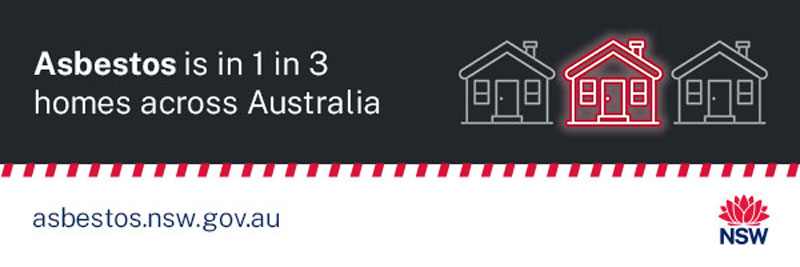Asbestos handling and removal
Asbestos Awareness Month (1-30 November)
Asbestos is found in 1 in 3 homes across Australia
If your home was built before 1990, it could contain asbestos. Asbestos can be found throughout the home, in walls, bathrooms, ceilings, floors, laundries, kitchens,roofs, fences and garages. Asbestos is dangerous when damaged, disturbed or deteriorating so you shouldn't remove it yourself. Four times more people die from asbestos related diseases annually than on our roads. If you're looking to renovate, planning ahead will help avoid delays and cost blow outs.
Be Asbestos Ready
Before you begin a renovation, please follow these three simple steps.
- Think ahead: Remember that asbestos was used in over 3000 building products and can be found throughout the home.
- Plan ahead: Exposure to asbestos fibres can cause cancer. Fibres from disturbed, damaged or deteriorating asbestos are easily inhaled and can be a health risk. There’s no fast or easy way to remove it, so plan ahead to avoid delays and cost blow outs.
- Get a professional: Please don’t risk your health, or anyone else’s health. If you’re renovating, start by contacting a licensed asbestos professional if you aren’t trained to locate, manage or remove it.
For more information on asbestos safety, visit asbestos.nsw.gov.au
Asbestos could be lurking in your bathroom, kitchen or other unexpected places in your home with at least one in three Australian homes likely to contain this dangerous product. Before its ban in 2003, asbestos was used in more than 3,000 common building materials.
DIY renovators and some tradies are among those most at risk for asbestos exposure. There is no known safe minimum level of exposure.
Find out how to keep you and your family safe around asbestos.
Products around the home that might contain asbestos include:
- Roofs, eaves, downpipes and insulation
- Interior walls (often with a non-asbestos covering on the outside)
- Kitchen splashbacks
- Under lino, some carpets, and tiles (and the cement compounds used to affix tiles)
- Lagging around pipes, inside fuse boxes or as part of ventilation shafts
- Fences, garden sheds and small outdoor construction like chicken coops
- As part of bonded cement compounds that make up walls –disturbed when you sand for painting
You can’t detect asbestos just by looking at it as some companies manufactured identical-looking products after the asbestos ban in 2003. If you’re renovating your own home, built prior to 1990, you need to be especially careful. Start by visiting asbestos.nsw.gov.au for more information. You can use the Asbestos Finder to know more about the materials in your home. And if you need, ask a licenced asbestos assessor to inspect your home.
If you’re worried about asbestos in your workplace, your first port of call should be your employer or health and safety representative, and then to SafeWork NSW.
Workers in the building and constructions trades, vehicle trades and manufacturing, as well as plumbers and electricians, are especially at risk of potentially encountering asbestos.
What to do if you think you have asbestos in your home
Council's Asbestos Guide - 880kb provides information and general advice regarding different types of asbestos and what you should do if you encounter them.
For more information on how to identify and deal with asbestos in your home, go to the Australian Asbestos Network.
If you have any concerns about asbestos at a property you can ask Council to investigate.








